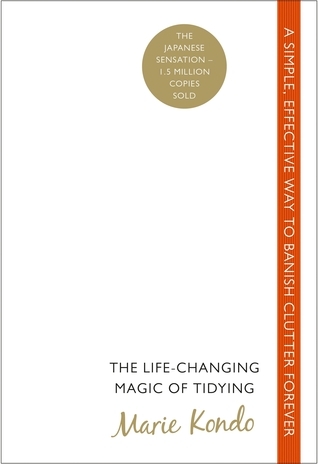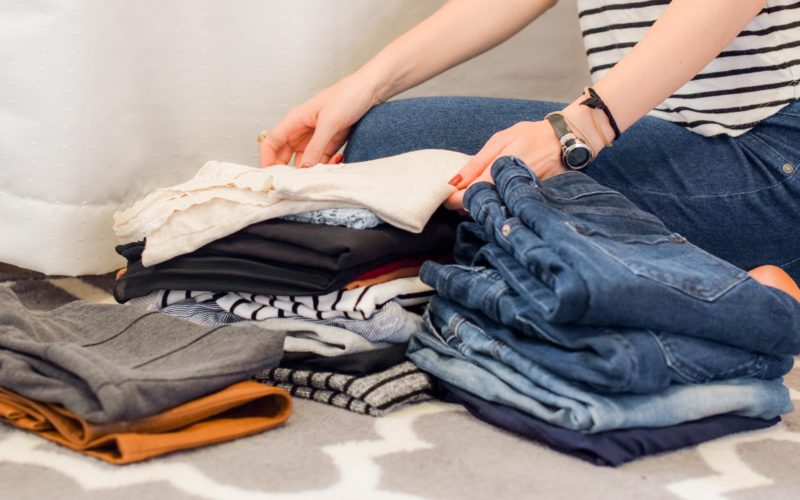I’d heard all about Marie Kondo’s philosophy of “spark joy” but hadn’t read her famous book until now.
My parents decided to move back to Singapore for good, bringing all of my clutter from Australia back with them. There was way too much stuff to fit into my meagre storage spaces in Singapore, so I knew that it was the right time to pick up the book.
I’d nabbed it at $2 from some thrift store back in Sydney but it had been gathering dust on my shelf. I guess I subconsciously knew that I’d need it one day.
It was quite freeing to live out of whatever I’d brought along in my suitcase the first time I came back to Singapore for good, and I’d learned to live with less for the past year. Sure, I’d picked up more possessions along the way, but I still had very little stuff overall.
Confronting my boxes of crap was quite mentally draining. I’d forgotten that I even had that much stuff. Thankfully, Marie Kondo offered a structured and effective way to get my things in order.
Featured Book: The Life-Changing Magic of Tidying by Marie Kondo

STEP 1: DISCARD FIRST
There’s no point storing things that you don’t actually want to keep. So the first step is to go through all of your items and one by one, ask if they “SPARK JOY”.
What that means will be quite personal to you. For me, it’s like whether the item gives you a nice feeling when you hold it in your hands. If it doesn’t, you should discard it.
The trick is to make sure that you get EVERY single item together and cull them all in one go so that you get a good idea of what you actually have and can make better decisions about what you truly need.
Some of us tend to have clothes scattered everywhere and books in different places, etc. so be sure to gather everything.
Marie recommends starting with clothes, then books, then slowly going towards more sentimental items (e.g. photos, letters, diaries). This is so that you can hone your decision-making processes with things that don’t matter that much.
So by the time it gets to the sentimental stuff, which we’re more inclined to keep just because, like omg memories, you’ll know whether it truly sparks joy and deserves to be kept or not.
Side note: I think there should be a caveat to this because some things like essentials ain’t gonna spark joy but I still gotta use them. Like socks and basic beauty products.
Clothing
I did a grand cull of my clothing and got rid of a few bags of stuff—a large chunk of it was actually stupid sentimental stuff like school jumpers and shirts that I’ll never wear again.
For most of my clothes, I just asked myself if they sparked joy and the answer was no, so out they go.
Papers
The same thing happened with my binders upon binders full of notes from my university classes. I’m never gonna need them again and they’d just take up space. I took some photos of my handwriting and any funny notes for memories’ sake, then dumped it all.
Books
One category that I struggled to cull was my books. I’d put all my books onto shelves before I’d read Marie’s advice on books, so I didn’t want to bother going through them one by one and deciding if I wanted to get rid of them (which is what she suggests).
I put aside some books that were in good condition for donating, but I felt bad about throwing them away if they didn’t “spark joy” because I’d highlighted most of them and wouldn’t be able to donate them or whatnot in that condition. So I’m just hoarding books for now.
Notebooks and stationery
I used to be a stationery freak, so I have to deal with my legacy of 101 notebooks and 1001 pens, coloured pens, markers and assorted stationery (I’ve culled this collection many times over the years, even without this book). Most of these things are still important to me and still spark joy.
STEP 2: DECIDE WHERE TO STORE WHAT YOU KEEP
Clothing
Funnily enough, the clothes that remained after the great cleanse fit perfectly into my closet and drawers. I guess it was meant to be.
Marie has an ingenious method for storing clothes. Firstly, she recommends folding over hanging wherever possible. Her method of folding ensures that you can open your drawer and see every item at a glance.
Basically, aim to fold your clothes into a rectangle and make sure that it stands up on its own, and try to match the height of the drawer.
I thought that this would be super annoying each time you take something out and have to fold it before putting it back, but I’ve found that it works wonders. I’m so glad that I can now see every piece of clothing that I have and choose what to wear easily.
Of course, you should aim to have everything of the same type in the same place, so that you know exactly where everything is. E.g. T-shirts with t-shirts, socks with socks.
An interesting tip was to store off-season clothes along with your in-season clothes. In Singapore, this is kind of a moot point, but the point is that you should have ALL your clothes accessible to wear at any time. It means that your off-season clothes don’t end up getting neglected and squished into some dark corner somewhere.
Stationery
There’s really no need to go all out and get some fancy storage solutions. Just use whatever you have at hand. For me, that meant using old plastic food containers (clean ones, obviously!!) and some old boxes to store my precious stationery collection.
Bathroom and kitchen
She also has some practical tips for the bathroom and kitchen. Basically, don’t keep stuff outside. Dry your shampoo and body wash (with your bath towel, I suppose) and put them away in the cupboard after use so that it doesn’t generate slime and it’s easier to wash the bathroom without all the stuff getting in the way.
(I don’t do this because I’m lazy, but you can try it if you want.)
In the kitchen, don’t keep any seasoning or sauces or whatever next to the stove, because it’ll likely get splattered with food and oil. Put them away in the cupboard.
SO WHAT’S THIS LIFE-CHANGING MAGIC?
I mean, it’s in the title of the book, right? What does it actually mean?
Apparently, for herself and many of her clients, once they put their house in order they actually discovered what they really wanted to do.
She had a flashback while tidying her room that she used to be assigned the role of “class organiser” in primary school because she’d been so enthusiastic about tidying things up. This led to her current choice of profession advising people on how to tidy up their homes.
People have started businesses, gotten a divorce and even lost weight after tidying up. Her theory is that when you’re left only with the things that “spark joy” they’ll likely have a common theme.
Experiencing the life-changing magic
For me, re-discovering my 101 notebooks led me to realise that I’d always written A LOT throughout my life. My handwriting might’ve changed, but I’ve always written things like journal entries, notes and random thoughts. I also started blogging at the tender age of eleven. Super cringey stuff, but still.
I realised that I’ve always been better at writing roles and capturing information (e.g. in meetings) rather than speaking roles, relaying information and thinking on my feet. I guess part of it is due to lack of exposure (I didn’t put myself forward for many speaking opportunities growing up), though the writing instinct comes naturally to me.
I’d never really considered writing as anything more than a hobby or fun side project, but now I’m thinking about doing it seriously and making a living out of it.
I guess I’ve experienced some of that life-changing magic she’s talking about. Who knows, maybe you might too?
Cover image from Unsplash






